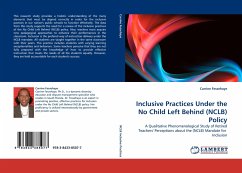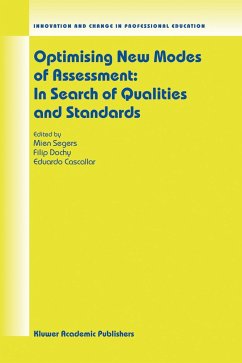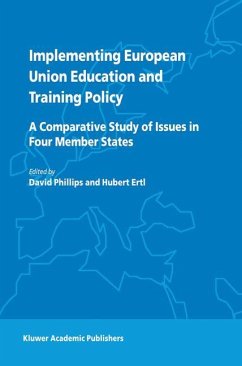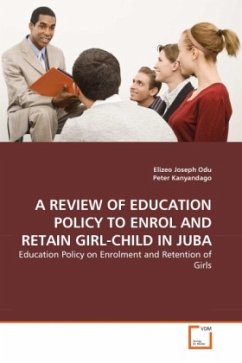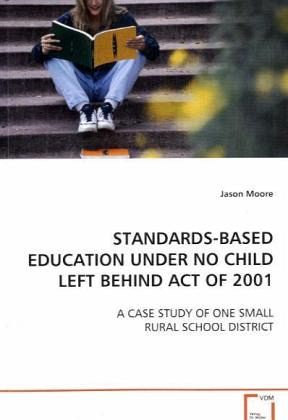
STANDARDS-BASED EDUCATION UNDER NO CHILD LEFT BEHIND ACT OF 2001
A CASE STUDY OF ONE SMALL RURAL SCHOOL DISTRICT
Versandkostenfrei!
Versandfertig in 6-10 Tagen
39,99 €
inkl. MwSt.

PAYBACK Punkte
20 °P sammeln!
Over the past forty years education in America hasbeen in a reform mode. The latest reform has come in the form of theNo Child Left Behind Act of 2001 (NCLB). NCLB has dictatedstandards to all schools in the nation. While many schools havejoined the reform movement, few have made the systemic changesnecessary to sustain achievement. A particular concern amongreformers is the effect of standards reform on the urban and/or ruralpoor. This book examines one rural school district sefforts to develop a standards-based education program. This school meetsthe federal criteria for both poor and rural ...
Over the past forty years education in America has
been in a reform
mode. The latest reform has come in the form of the
No Child Left
Behind Act of 2001 (NCLB). NCLB has dictated
standards to all
schools in the nation. While many schools have
joined the reform
movement, few have made the systemic changes
necessary to
sustain achievement. A particular concern among
reformers is the
effect of standards reform on the urban and/or rural
poor.
This book examines one rural school district s
efforts to develop a
standards-based education program. This school meets
the federal
criteria for both poor and rural having 100% of its
students
qualifying for the free and reduced lunch program.
In addition, over
30% of the student population comes to school without
knowledge
of the English language. In spite of these apparent
disadvantages,
the school has achieved success as exhibited by a
growth of over
100 points as measured by the California Academic
Performance
Index (API).
A qualitative, descriptive-analytic case study
methodology was
employed to provide an in-depth investigation of the
school site s
implementation of fiduciary and curricular matters.
been in a reform
mode. The latest reform has come in the form of the
No Child Left
Behind Act of 2001 (NCLB). NCLB has dictated
standards to all
schools in the nation. While many schools have
joined the reform
movement, few have made the systemic changes
necessary to
sustain achievement. A particular concern among
reformers is the
effect of standards reform on the urban and/or rural
poor.
This book examines one rural school district s
efforts to develop a
standards-based education program. This school meets
the federal
criteria for both poor and rural having 100% of its
students
qualifying for the free and reduced lunch program.
In addition, over
30% of the student population comes to school without
knowledge
of the English language. In spite of these apparent
disadvantages,
the school has achieved success as exhibited by a
growth of over
100 points as measured by the California Academic
Performance
Index (API).
A qualitative, descriptive-analytic case study
methodology was
employed to provide an in-depth investigation of the
school site s
implementation of fiduciary and curricular matters.



